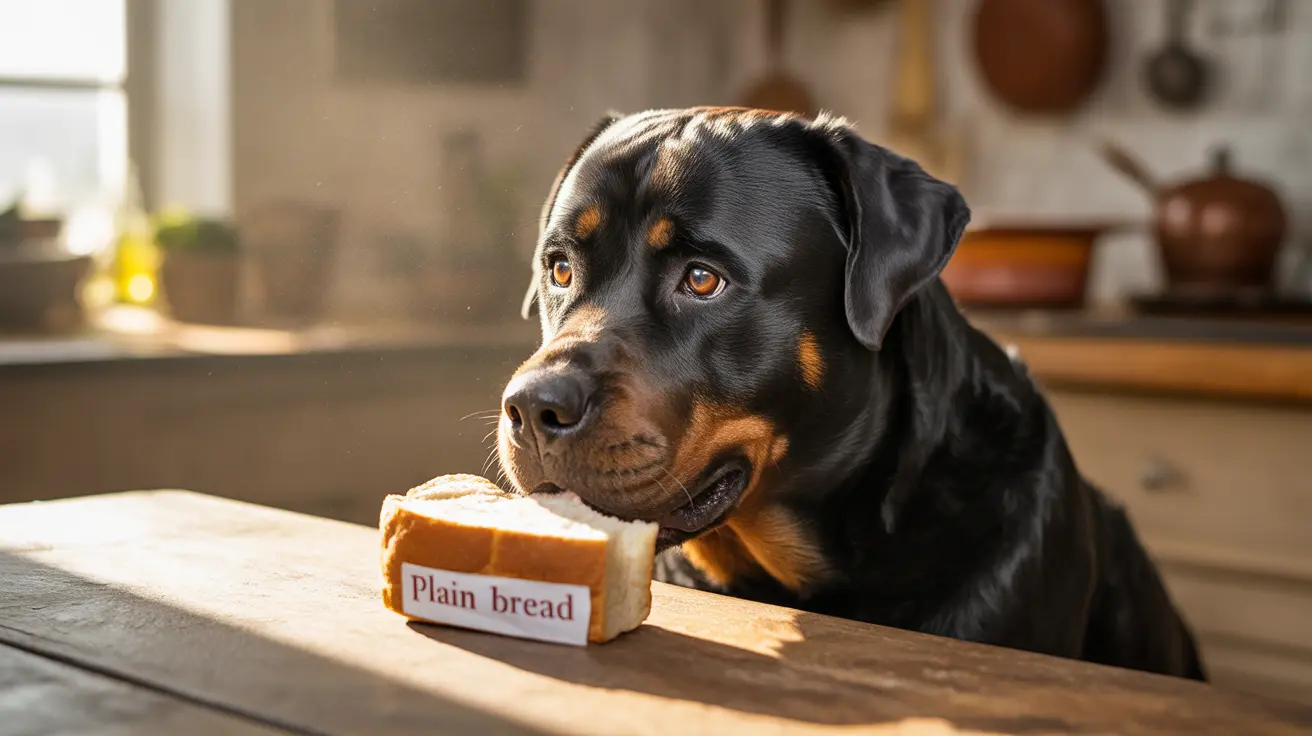Understanding the Basics of Bread and Dogs
Plain white or wheat bread isn't toxic to dogs, but it's essential to recognize that bread offers little nutritional value for your canine companion. It's primarily a source of empty calories that could contribute to weight gain without providing the nutrients your dog needs for optimal health.
While small amounts of plain bread are generally safe, moderation is key. Veterinary experts recommend that treats, including bread, should constitute no more than 10% of your dog's daily caloric intake.
When Bread Becomes Dangerous for Dogs
Raw Dough: A Serious Health Hazard
Uncooked bread dough poses a severe threat to dogs. When ingested, the warm environment of your dog's stomach causes the dough to rise, potentially leading to:
- Dangerous bloating
- Alcohol toxicosis from fermentation
- Severe pain and discomfort
- Life-threatening complications requiring emergency care
Harmful Ingredients to Watch For
Many bread varieties contain ingredients that are toxic to dogs:
- Raisins and nuts (especially macadamia nuts)
- Garlic and onions
- Xylitol (artificial sweetener)
- Chocolate chips or cocoa
- Excessive salt or seasonings
Health Impacts of Bread Consumption in Dogs
Weight Management Concerns
Regular bread consumption can lead to obesity in dogs, which affects over 50% of American pets. This extra weight increases the risk of:
- Diabetes
- Joint problems
- Heart disease
- Reduced quality of life
Digestive Issues
Some dogs may experience digestive problems from bread consumption, including:
- Bloating
- Constipation
- Diarrhea
- General gastrointestinal discomfort
Safe Ways to Feed Bread to Dogs
If you choose to give your dog bread occasionally, follow these guidelines:
- Offer only plain, fully baked bread
- Keep portions small
- Check ingredients carefully
- Monitor for adverse reactions
- Use as an occasional treat, not a regular food item
Healthy Alternatives to Bread
Instead of bread, consider these nutritious treats for your dog:
- Fresh vegetables like carrots or green beans
- Small pieces of lean, cooked meat
- Commercial dog treats formulated for optimal nutrition
- Fresh fruits (excluding grapes and raisins)
- Plain, cooked sweet potato chunks
Frequently Asked Questions
Is plain bread safe for dogs to eat, and how much can they have?
Plain bread is generally safe for dogs in small amounts. Limit portions to tiny pieces, no more than a few bites, and only occasionally as a treat. The exact amount depends on your dog's size and overall health condition.
What types of bread or bread ingredients should I avoid giving my dog?
Avoid bread containing raisins, nuts, garlic, onions, xylitol, chocolate, or any artificial sweeteners. Also, never feed your dog raw bread dough or moldy bread, as these can be extremely dangerous.
Can eating bread lead to health problems like obesity or digestive issues in dogs?
Yes, regular bread consumption can contribute to weight gain and obesity in dogs. Some dogs may also experience digestive issues like bloating, constipation, or diarrhea from eating bread.
Why is raw bread dough dangerous for dogs, and what symptoms should I watch for?
Raw bread dough is dangerous because it can expand in a dog's stomach and produce alcohol through fermentation. Watch for symptoms like bloating, distended abdomen, lethargy, weakness, and signs of alcohol toxicosis.
What are healthy alternatives to bread for dog treats?
Healthy alternatives include fresh vegetables, lean meats, commercial dog treats, and safe fruits. These options provide better nutrition and fewer empty calories than bread.
Conclusion
While bread isn't inherently toxic to dogs, it's best to err on the side of caution and limit its consumption. Focus on providing your pet with nutritionally balanced meals and healthier treats designed specifically for dogs. If you have concerns about your dog's diet, always consult with your veterinarian for personalized advice.






